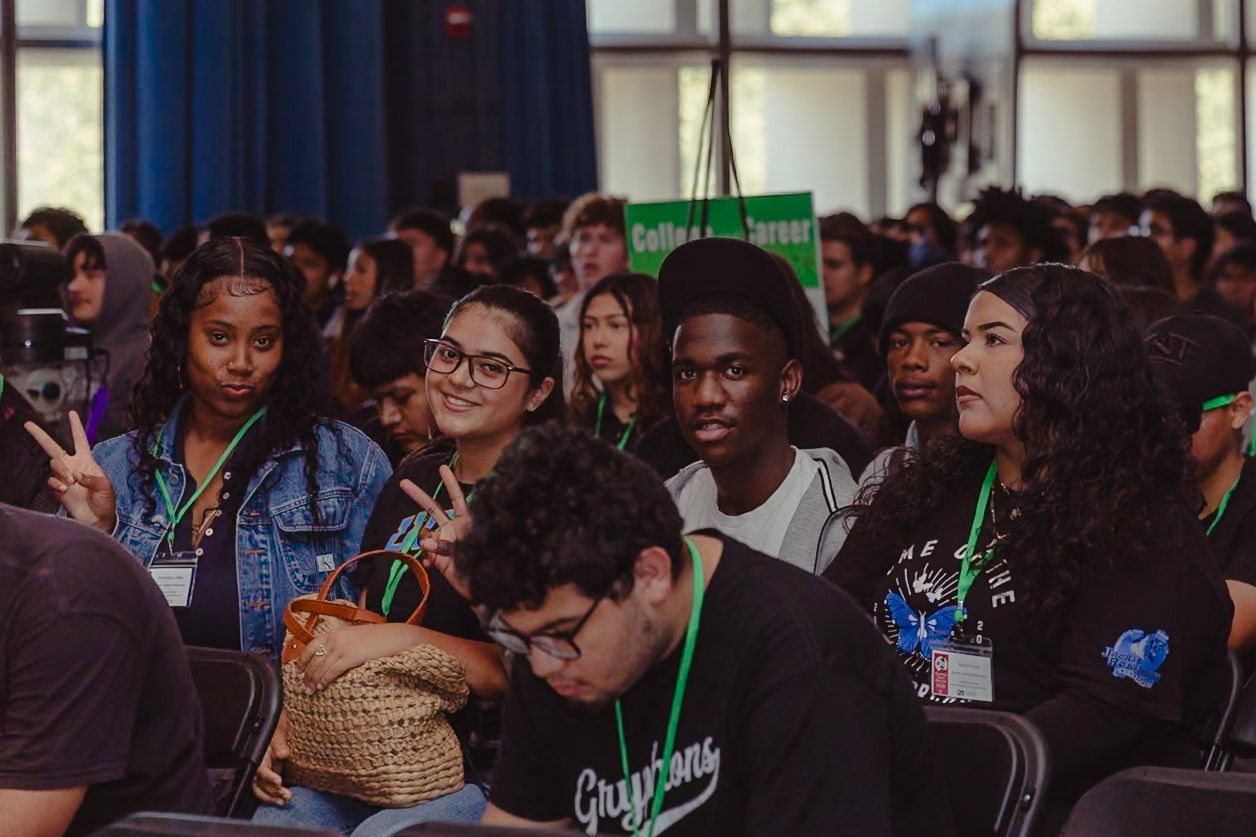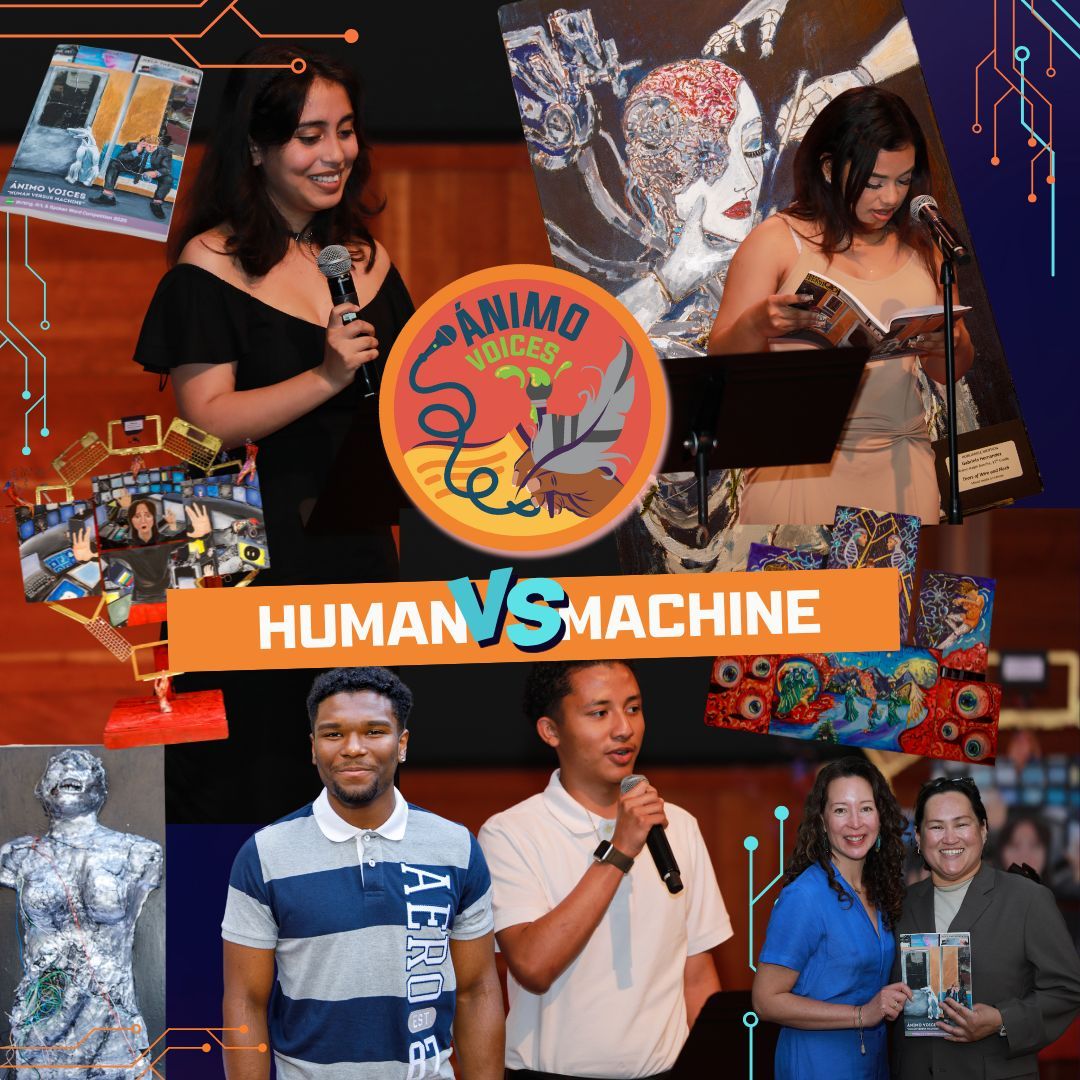Green Dot Schools
Green Dot Public Schools has transformed public education since 1999, preparing nearly 10,000 students across 18 schools in underserved LA communities for college, leadership, and life. We believe high-quality education is the key to social mobility and lasting change in our society.
Visit this organization’s website to learn more

4 Submitted Ideas
- 2013 Grants Challenge·🎉 2013 Goldhirsh Foundation Winner
The Salamander Project: Redesigning Creativity in Education
The Salamander Project will repair and regenerate the missing element of public education: creativity. The project will model a 21st century classroom through transforming a neglected library at Locke High School into an Innovation Space while developing the HackerSpace in a Box ‘Creativity Generator’ to foster students’ exploration, critical thinking, and collaborative problem solving.
"What will public education in Los Angeles look like in 2050?” If the current system remains as resistant to meaningful reform as it has for the past half century, then 50% of our city’s ninth graders will fail to graduate with a worthwhile diploma and face a lifetime of limited opportunities. For anybody who cares about the future of the city, the question should be two-fold “What do we want Los Angeles to look like in 2050? How do we need public education to transform to get us there?”
Public education must accept that a model developed to meet the needs of a nineteenth century manufacturing-based economy is no longer viable in the 21st century. It must evolve to meet the needs of an economy shifting to creativity and invention in almost every field, from medicine and manufacturing to agriculture and politics. Public education is doing little to prepare students for such an environment.
The Salamander Project addresses two challenges to such an evolution. Firstly it considers the future of the school library. The school library has declined in importance and its relevance called into question. Many new schools are built without libraries. Many existing libraries are unused anachronisms: forgotten and neglected spaces filled with outdated books. The Salamander Project will redefine the purpose of such ‘dead space’ and adapt it to the evolving needs of schools, students, and teachers.
Secondly, the project explores how to inject, or seed, creativity in the classroom through the development of ‘Creativity Generators’ such as HackerSpace in a Box. The last few years have seen an explosion in the digital education marketplace. Hundreds of companies are developing innovative new classroom applications of technology. However, the industry is still in its early stages, with little appreciation for the challenges of wide scale adoption. Many teachers, even forward thinking early-adopters, struggle to understand how such innovations can be realistically incorporated into their schools. The Salamander Project will provide teachers with the opportunity to explore and pilot a new education tool— HackerSpace in a Box— that inspires creative thinking processes within a collaborative, project-based learning environment that will model a realistic vision of a 21st century education.
The project comprises two distinct phases:
PHASE 1 Through a week-long series of innovation workshops, two groups comprising visionary thought-leaders in the education and design fields will address two key questions: 1) How to build the ultimate “creativity generator” and ‘seed’ creativity within the learning environment; and 2) How to create a physical space that encourages collaboration and creative problem solving.
No Right Brain Left Behind will, along with their partners, Sparkling Science, will further develop an innovative digital learning tool and creativity generator called HackerSpace in a Box. Currently, HackerSpace is comprised of an Arduino-based circuit board called the Makey Makey, electro-conductive paint, and copper tape. This open source creativity kit enables students to create customized computer interfaces from elements in their surroundings by connecting electro-conductive objects and surfaces to the circuit board. Currently, HackerSpace requires facilitated workshops with teachers and students before it can be implemented in the classroom. In order to increase adoptability, No Right Brain Left Behind will redesign the experience to enable ease of use for teachers as well as students, and start developing a comprehensive curriculum. Meanwhile, a group led by The Third Teacher+, an educational design agency, will consider the conversion of the school library at Green Dot’s Locke High School into an Innovation Space and produce a comprehensive design brief.
PHASE TWO From June to August, the design brief will be developed into an interior design for the remodeling of the library into an Innovation Space. Concurrently, No Right Brain Left Behind will develop the next generation HackerSpace in a Box and associated curricula and lesson plans. Remodeling will take place in July. Teachers will be trained in the Innovation Space in August. From September to December, Green Dot will pilot the next-generation HackerSpace in a Box within the Innovation Space throughout the semester. Education specialists from UCLA’s Graduate School of Education and USC’s Rossier School of Education will observe lessons and provide feedback.
 PLAY ·2025 Grants Challenge
PLAY ·2025 Grants ChallengeImmediate Support, Lasting Impact

Green Dot Public Schools seeks urgent support to sustain its on-campus mental health program, which provides life-saving services to students in historically underserved communities. This grant will help retain our full team of counselors, psychologists, and interns—ensuring continued access to trauma-informed care, including EMDR therapy, for students facing high levels of adversity and trauma.
 CREATE ·2025 Grants Challenge
CREATE ·2025 Grants ChallengeSuccess Starts Here: Launch to College and Career!

Green Dot Public Schools will ignite the futures of our 2026 seniors with a powerful, full-day launch event across all 12 high schools—featuring alumni panels, networking, and tailored sessions for college, careers, and military pathways. We'll jumpstart a thriving alumni network and award Opportunity Fund scholarships to help first-gen students overcome hidden costs and thrive at high-persistence four-year universities.
 CREATE ·2025 Grants Challenge
CREATE ·2025 Grants ChallengeÁnimo Voices: Amplifying Student Stories!

Each year, Green Dot Public Schools hosts Ánimo Voices, a competition where students submit visual art, writing, and spoken word pieces based on a contemporary theme. Starting in 2026, we will work to expand this program so that our winners will receive internship, mentorship, and other work-based learning opportunities with creative industry professionals, helping them break through barriers to entry in the arts.